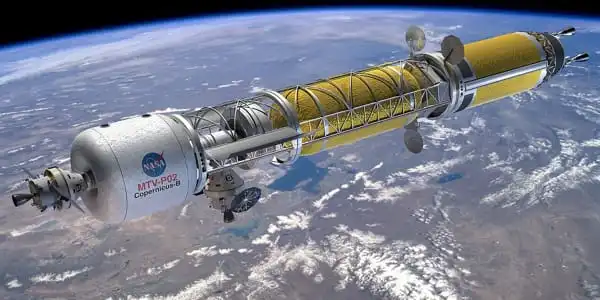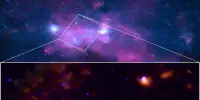The United States military is preparing to take the next step in constructing a nuclear rocket to assist in monitoring Earth-moon space, an area that has been designated as a high strategic priority. The Department of Defense aims to deploy spacecraft in cislunar space—the region between Earth’s orbit and the orbit of the moon—with the thrust and agility that only nuclear thermal propulsion (NTP) can give. The Defense Advanced Research Projects Agency (DARPA) is looking to private industry for the design, development, fabrication, assembly, and testing of a nuclear thermal rocket engine powered by high-assay low-enriched uranium fuel to heat a liquid hydrogen propellant through its Demonstration Rocket for Agile Cislunar Operations (DRACO) program.
The Defense Advanced Research Projects Agency (DARPA) stated on that it is seeking proposals for the second and third stages of a project to design, manufacture, and construct a nuclear thermal rocket engine for an expected flight demonstration in Earth orbit by 2026.
“These propellant capabilities will enable the United States to strengthen its interests in space and extend possibilities for NASA’s long-duration human spaceflight missions,” DARPA officials said in a statement.
The suggestions will help DARPA’s Demonstration Rocket for Agile Cislunar Operations (DRACO) program, which intends to create a nuclear thermal propulsion (NTP) system for usage in Earth-moon orbit. DRACO is part of the US military’s bigger mission to keep a watch on cislunar (Earth-moon) space as government and private activity expands in this area over the next decade.
These propellant capabilities will enable the United States to strengthen its interests in space and extend possibilities for NASA’s long-duration human spaceflight missions. DARPA anticipates that DRACO will permit time-critical missions across large distances in cislunar space.
DARPA officials
Fission reactors power NTP systems. The reactors heat hydrogen or other propellants to extremely high temperatures before ejecting the superheated gas through nozzles to generate thrust. NTPs have a thrust-to-weight ratio that is 10,000 times greater than electric propulsion systems. And put against traditional chemical rockets, the propulsion efficiency (or specific impulse) of NTPs is roughly two to five times higher, DARPA officials wrote in a description of the DRACO program.
Draco’s first phase comprised awards to General Atomics, Blue Origin, and Lockheed Martin in April 2021. The phase was supposed to last 18 months and would be divided into two separate tracks. General Atomics’ Track A featured the preliminary design of a nuclear thermal propulsion reactor as well as a propulsion component. Track B, explored independently by Blue Origin and Lockheed Martin, sought to develop a “operational system spacecraft design” to meet future mission objectives, including a demonstration system.
DARPA also awarded a $14 million task order for DRACO to Gryphon Technologies, a Washington, D.C.-based corporation that provides engineering and technical solutions to national security organizations, in September 2020.

NASA is also interested in nuclear thermal propulsion, for its potential to get missions to Mars in half the time than the current six to nine months possible with current propulsion systems. NASA’s fiscal 2023 budget request, not yet approved by Congress, includes $15 million to support nuclear propulsion.
Early American efforts to create a nuclear thermal propulsion system in the 1960s and 1970s were inspired by the long-distance potential. NASA was making headway until President Richard Nixon abruptly halted a slew of rocket programs in order to refocus the space agency on seemingly less ambitious tasks.
NASA officials noted in the $26 billion budget request for fiscal year 2023 that the space agency is collaborating on the DRACO project “using non-reimbursable engagement with industry players where technology investments have shared benefit to both organizations.”
NASA worked on flight demonstration projects “with subject matter expertise, fuel testing, and turbine equipment design” in the previous fiscal year, according to the agency’s DRACO program. Notably, the American Institute for Physics reports that the U.S. House of Representatives allocated $110 million for nuclear thermal propulsion in fiscal year 2022, “rejecting the Biden administration’s proposal to refocus NASA’s efforts on developing a nuclear reactor that could power crewed bases on the moon and eventually Mars.”
DARPA anticipates that DRACO will permit time-critical missions across large distances in cislunar space. NTP achieves a high thrust-to-weight ratio, similar to chemical propulsion, but with two to five times the efficiency by employing systems that are faster than electric systems and smaller than chemical systems. This combination of speed and size might give the DOD with the mobility it need near Earth while also supporting future NASA missions to more distant destinations such as Mars.
















